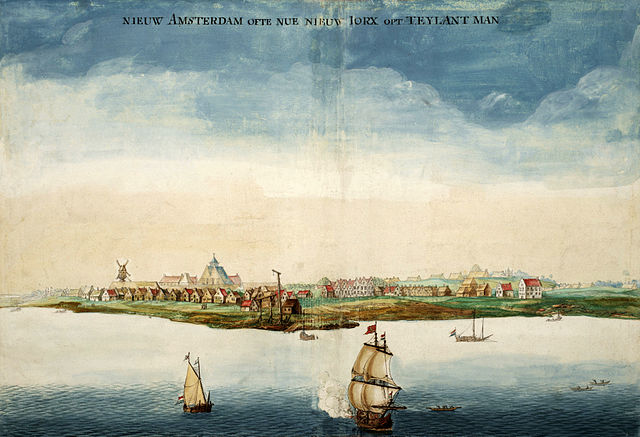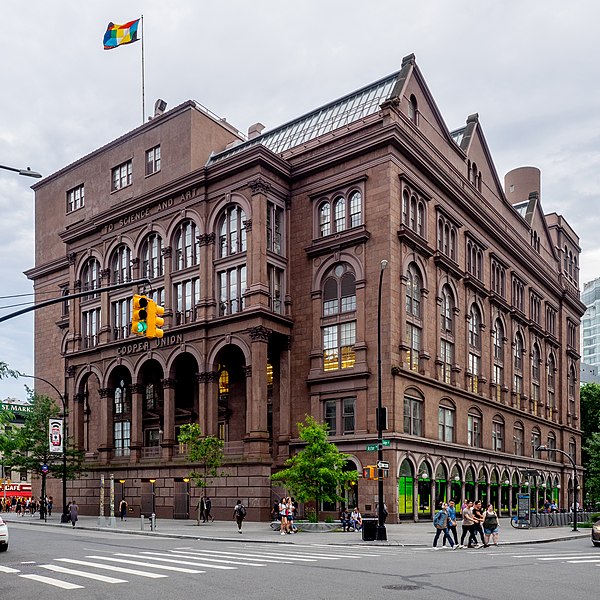Tribeca, originally written as TriBeCa, is a neighborhood in Lower Manhattan in New York City. Its name is a syllabic abbreviation of "Triangle Below Canal Street". The "triangle" is bounded by Canal Street, West Street, Broadway, and Chambers Street. By the 2010s, a common marketing tactic was to extend Tribeca's southern boundary to either Vesey or Murray Streets to increase the appeal of property listings.
Hudson Street in Tribeca
Textile Building (1901) in the Tribeca Historic District
"Radio Row", seen here in 1934, was displaced by the building of the World Trade Center. (Photo by Berenice Abbott)
American Thread Building
Lower Manhattan, also known as Downtown Manhattan or Downtown New York, is the southernmost part of Manhattan, the central borough of New York City. The neighborhood is the historical birthplace of New York City and for its first 225 years was the entirety of the city. Lower Manhattan serves as the seat of government of both Manhattan and the entire City of New York. Because there are no municipally defined boundaries for the neighborhood, a precise population cannot be quoted, but several sources have suggested that it was one of the fastest-growing locations in New York City between 2010 and 2020, related to the influx of young adults and significant development of new housing units.
Lower Manhattan, including Wall Street, anchoring New York City's role as the world's principal fintech and financial center, with One World Trade Center, the tallest skyscraper in the Western Hemisphere
New Amsterdam, centered in what eventually became Lower Manhattan, in 1664, the year England took control and renamed it New York
Peter Stuyvesant
Cooper Union at Astor Place, one of Lower Manhattan's most storied buildings, where Abraham Lincoln gave his famed Cooper Union speech on February 27, 1860








